(MENAFN– Newsfile Corp)
Development capital expenditures of $110 to $120 million resulting in 28 net operated wells drilled
Infrastructure projects are underway in Open Creek and Nampa fields allowing for future growth
Intend to initiate ~$10 million Canadian Exchange Offer to Acquire Obsidian Energy Common Shares for Common Shares of InPlay Oil Corp.
Calgary, Alberta–(Newsfile Corp. – July 10, 2025) – OBSIDIAN ENERGY LTD. (TSX: OBE) (NYSE American: OBE) (” Obsidian Energy “, the ” Company “, ” we “, ” us ” or ” our “) is pleased to announce our second half 2025 capital plan and financial guidance that builds on the success of our first half 2025 program at Peace River and resumes drilling at Willesden Green.
“With the disposition of our Pembina asset during the second quarter, coupled with the recent tariff and OPEC+ induced commodity price volatility, we have adapted our approach to 2025 accordingly,” commented Stephen Loukas, Obsidian Energy’s President and CEO. “Post-disposition, due to our enhanced liquidity position as well as the continued discount that our shares trade to intrinsic-value, we have opted to moderate our near-term production growth via the reduction in capital expenditures and have chosen to drive growth in per-share metrics via incremental share buybacks. Moreover, during the second half we are extending infrastructure to our Open Creek field which will, upon completion, allow us to aggressively grow our Cardium and Belly River production volumes as market conditions improve. Furthermore, we plan on building an all-season road to our Nampa field that will bring ~200 barrels per day of currently shut-in oil back on production and enable pursuit of a full field development plan.”
Mr. Loukas continued, “Our disciplined level of spending will initially keep average production roughly flat to our post Pembina disposition of ~27,700 boe/d while building to ~29,000 boe/d as we exit 2025, with the option to further grow production during the first quarter of 2026 should market conditions prove conducive. Our second half program in Peace River is centred on key development fields in Harmon Valley South (” HVS “) and Dawson, following up on recent success in these areas. Initial drilling operations began in mid-June at HVS targeting the Bluesky. At Dawson we are furthering development in the heart of the field, where results in the Clearwater continue to exceed expectations. The second half of the year will also see us return to development at Willesden Green as we target the proven Cardium formation and continue to delineate the emerging Belly River play at both our Crimson and Open Creek fields. Lastly, regarding our ~33 percent share holding in InPlay Oil Corp. (” InPlay “), despite being subject to restrictions on the sale of our InPlay shares to third parties until October 7, 2025, we have had several third parties express interest in this position. We believe our significant InPlay position can ultimately be monetized at a premium to current trading levels, however, given that as part of our disposition transaction to InPlay we took back a slightly larger equity stake than we had originally contemplated due to market conditions, we intend to monetize ~10 percent of our InPlay share holdings, representing ~3.3 percent of InPlay’s total current shares outstanding through an exchange offer to Obsidian Energy shareholders located in the provinces and territories of Canada for common shares of InPlay later this month. This exchange offer provides a mechanism for the Company to buy back shares while allowing us to marginally reduce our InPlay holdings and providing additional optionality as we work through the further monetization of our position.”
SECOND HALF 2025 GUIDANCE
The Company plans between $110 and $120 million in capital expenditures plus an additional $13 to $15 million in decommissioning expenditures in the second half of 2025. Capital expenditures in the second half of 2025 are expected to be $62 million for Peace River and $52 million for Willesden Green. Included in our second half capital expenditures is approximately $8 million of waterflood capital and $10 million to pre-purchase production tanks at a price discount for our first quarter 2026 Peace River program. At our planned exit rate of ~29,000 boe/d, we estimate sustaining capital on a go forward basis will be approximately $180 million, excluding any incremental discretionary waterflood capital.
Second half 2025 capital expenditures represent a material reduction of approximately 33 percent from both our first half 2025 program and our second half program in 2024. Production is expected to average 27,700 boe/d in the second half of 2025, which is roughly flat to first half 2025 production, excluding the Pembina disposition that closed in April 2025 (the ” Pembina Disposition “). Included in our second half production estimate is the impact of a planned turnaround at our non-operated Pembina Cardium Unit #11 field which is expected to reduce second half 2025 volumes by approximately 300 boe/d. Significantly lower capital expenditures have resulted in expected average production below the ~29,000 boe/d referenced in our May 7, 2025 press release, however we expect to reach this production level later in the second half of 2025.
Net operating costs improved in the second half of 2025, primarily driven by the Pembina Disposition, as those assets had a higher cost structure. General & administrative costs increased on a per boe basis in the second half due to our lower production base post the Pembina Disposition, as well as the decision to moderate production growth in the short-term.
Our second half 2025 guidance assumes commodity prices of US$65.00/bbl WTI, US$3.50/bbl MSW differential, US$11.50/bbl WCS differential, and $2.50/GJ AECO natural gas. Based on these assumptions, we anticipate funds flow from operations (” FFO “) of approximately $113 million with a net debt to FFO ratio of approximately 1.3 times (based on annualized second half FFO and not inclusive of the value of our InPlay shares) and prior to the NCIB.
Our second half guidance is presented below.
|
|
|
|
|
|
H2 2025E
Guidance |
|
| Production1 |
|
|
boe/d |
|
|
27,100 – 28,300 |
|
| % Oil and NGLs |
|
|
% |
|
|
72 |
|
| Capital expenditures2 |
|
|
$ millions |
|
|
110 – 120 |
|
| Decommissioning expenditures |
|
|
$ millions |
|
|
13 – 15 |
|
| Net operating costs3 |
|
|
$/boe |
|
|
13.45 – 14.35 |
|
| General & administrative |
|
|
$/boe |
|
|
2.00- 2.10 |
|
| |
|
|
|
|
|
|
|
| Based on midpoint of above guidance |
|
|
|
|
| FFO3 |
|
|
$ millions |
|
|
113 |
|
| FFO/share2,3 |
|
|
$/share |
|
|
1.67 |
|
| FCF3 |
|
|
$ millions |
|
|
(16 |
) |
| FCF/share2,3 |
|
|
$/share |
|
|
(0.24 |
) |
| Net debt (prior to NCIB)3,4 |
|
|
$ millions |
|
|
295 |
|
| Annualized net debt (prior to NCIB) to FFO3,5 |
|
|
times |
|
|
1.3 |
|
| |
|
|
|
|
|
|
|
| Pricing assumptions 2 |
|
|
|
|
|
|
|
| WTI |
|
|
US$/bbl |
|
|
65.00 |
|
| Foreign Exchange Rate |
|
|
CAD/USD |
|
|
1.36 |
|
| MSW Differential |
|
|
US$/bbl |
|
|
3.50 |
|
| WCS Differential |
|
|
US$/bbl |
|
|
11.50 |
|
| AECO |
|
|
$/GJ |
|
|
2.50 |
|
Asset level information,
based on midpoint of above guidance |
|
|
H2 2025E
Guidance |
|
| Heavy Oil |
|
|
|
|
|
|
|
| Average production |
|
|
boe/d |
|
|
13,500 |
|
| Capital expenditures2 |
|
|
$ millions |
|
|
62 |
|
| Net operating costs3 |
|
|
$/boe |
|
|
17.40 |
|
| Netback3 |
|
|
$/boe |
|
|
26.92 |
|
| Net operating income3 |
|
|
$ millions |
|
|
67 |
|
| Asset level FCF |
|
|
$ millions |
|
|
5 |
|
| |
|
|
|
|
|
|
|
| Light Oil |
|
|
|
|
|
|
|
| Average production |
|
|
boe/d |
|
|
14,200 |
|
| Capital expenditures2 |
|
|
$ millions |
|
|
52 |
|
| Net operating costs3 |
|
|
$/boe |
|
|
10.60 |
|
| Netback3 |
|
|
$/boe |
|
|
26.90 |
|
| Net operating income3 |
|
|
$ millions |
|
|
70 |
|
| Asset level FCF |
|
|
$ millions |
|
|
18 |
|
|
(1) Refer to ‘Supplemental Production Disclosure’ below for details of production by product types.
(2) Refer to “Budget Assumptions Information” below for further details.
(3) See “Non-GAAP and Other Financial Measures” section below for further details.
(4) Net debt figures do not include the impact of the 9.1 million InPlay Oil Corp. common shares, which were received as part of the Pembina disposition, valued at ~$87 million using a closing price of $9.50 on July 9, 2025.
|
Estimated sensitivities to selected key assumptions on FFO for the second half of 2025 are as follows:
| Guidance Sensitivity Table |
|
| Variable |
|
|
Range |
|
|
Change in H2 2025E FFO
($ millions) |
|
| WTI (US$/bbl) |
|
|
+/- $1.00/bbl |
|
|
3.2 |
|
| Foreign Exchange Rate (CAD/USD) |
|
|
+/- $0.01 |
|
|
1.4 |
|
| MSW light oil differential (US$/bbl) |
|
|
+/- $1.00/bbl |
|
|
0.9 |
|
| WCS heavy oil differential (US$/bbl) |
|
|
+/- $1.00/bbl |
|
|
1.3 |
|
| AECO ($/GJ) |
|
|
+/- $0.25/GJ |
|
|
0.9 |
|
SECOND HALF 2025 CAPITAL AND OPERATING PROGRAM
The breakdown of operated wells expected to be rig released during the second half of 2025 is as follows:
|
|
|
|
|
|
Gross (Net) Wells |
|
|
|
|
|
|
|
H2 2025E |
|
| DEVELOPMENT WELLS |
|
|
|
|
|
|
|
| Heavy Oil Assets |
|
|
|
|
|
|
|
| Peace River (Bluesky) |
|
|
|
|
|
2 (2.0 |
) |
| Peace River (Clearwater) |
|
|
|
|
|
18 (18.0 |
) |
| Light Oil Assets |
|
|
|
|
|
|
|
| Willesden Green (Cardium) |
|
|
|
|
|
4 (4.0 |
) |
| Willesden Green (Belly River) |
|
|
|
|
|
3 (3.0 |
) |
| Willesden Green (Mannville) |
|
|
|
|
|
1 (1.0 |
) |
| TOTAL OPERATED WELLS 1 |
|
|
|
|
|
28 (28.0 |
) |
(1)In addition, Obsidian Energy expects to participate in a total of six non-operated (2.7 net) wells in the second half of 2025.
HEAVY OIL ASSETS
Over the second half of 2025, the Company has planned $62 million of capital expenditures in Peace River, supporting average production of 13,500 boe/d, a 15 percent increase from the 11,728 boe/d in the second half of 2024.
Our second half 2025 Peace River drilling program is focused on our key development fields at HVS (Bluesky formation) and Dawson (Clearwater formation). After an exploration/appraisal focused first half 2025 program, approximately 70 percent of our second half program utilizes existing pads, which allows us to efficiently grow our production by targeting lower risk development areas.
Clearwater Formation – The Dawson area remains a key focus for the Company with 18 (18.0 net) wells planned, representing 90 percent of our second half Peace River development program. We have recently commenced drilling with two rigs on existing pads and expect this field to continue its organic growth trajectory.
Our waterflood pilot on the Dawson 4-24 Pad continues to progress with all five (5.0 net) wells now on production including the two single-leg injector wells that are temporarily being produced prior to being converted to injection. The third development well on this pad was placed on production in mid-May and reported a 30-day initial production ( “IP” ) rate of 242 boe/d (100 percent oil).
Bluesky Formation – In June, we commenced our two (2.0 net) well second half 2025 Bluesky development program on our 14-07 HVS Bluesky Pad, immediately offsetting our initial highly productive well. The first (1.0 net) well that was drilled on this pad, earlier in 2025, produced at a 30-day IP rate of 546 boe/d (100 percent oil).
LIGHT OIL ASSETS
The Company expects to return to development in our Willesden Green area in the second half of 2025 with a one-rig operated program. Primary activities include development and exploration/appraisal drilling in the Cardium, Belly River and Mannville formations combined with continued participation in a non-operated Pembina Cardium Unit #11 drilling program. Over the second half of 2025, the Company has planned $52 million of capital expenditures in our Light Oil assets, supporting average production of approximately 14,200 boe/d.
Willesden Green (Cardium, Belly River and Mannville Formations) – Our Willesden Green second half 2025 drilling program is designed to capitalize on the established Cardium and Mannville formations complemented by the emerging Belly River play, which has strong potential. We have eight (8.0 net) wells planned for the area: four (4.0 net) wells targeting the Cardium formation in the Willesden Green Cardium Unit #2, where we recently increased our working interest in conjunction with our Pembina disposition, three (3.0 net) wells that target the Belly River formation and one (1.0 net) well targeting the Mannville. The balance between formations allows us to optimize returns while strategically appraising and delineating new inventory. In the longer term the presence of both the Cardium and Belly River formations strengthens our development outlook and enhances our ability to tactically grow production and drive additional value creation at Willesden Green.
Pembina (Cardium Formation, Non-Operated) – We are planning for continued drilling activity at the Pembina Cardium Unit #11 (~45 percent working interest) in the second half of 2025 as our partner completes the 2025 program. This underexploited area in the heart of the Pembina field has consistently delivered strong economic results; and we look forward to its continued development.
HEDGING UPDATE
The Company has recently added new oil and gas contracts to help mitigate the volatile commodity price environment. Currently, we have the following contracts outstanding on a weighted average basis:
|
|
|
Notional Volume (bbl/d) |
|
|
Remaining Term |
|
|
Price (C$/bbl) |
|
| Oil |
|
|
|
|
|
|
|
|
|
|
| WTI Swap |
|
|
12,375 |
|
|
June 2025 |
|
|
$85.71 |
|
| WTI Swap |
|
|
12,375 |
|
|
July 2025 |
|
|
$86.29 |
|
| WTI Swap |
|
|
10,500 |
|
|
August 2025 |
|
|
$90.78 |
|
| WTI Swap |
|
|
6,500 |
|
|
September 2025 |
|
|
$93.10 |
|
| WCS Differential |
|
|
8,500 |
|
|
June 2025 |
|
|
($19.39 |
) |
| WCS Differential |
|
|
7,750 |
|
|
Q3 2025 |
|
|
($18.83 |
) |
| WCS Differential |
|
|
6,000 |
|
|
Q4 2025 |
|
|
($19.30 |
) |
| MSW Differential |
|
|
1,500 |
|
|
June 2025 |
|
|
($7.90 |
) |
| MSW Differential |
|
|
500 |
|
|
Q3 2025 |
|
|
($6.59 |
) |
| |
|
|
|
|
|
|
|
|
|
|
| |
|
|
Notional Volume (mcf/d) |
|
|
Remaining Term |
|
|
Price (C$/mcf) |
|
| Natural Gas |
|
|
|
|
|
|
|
|
|
|
| AECO Swap |
|
|
25,118 |
|
|
June 2025 – October 2025 |
|
|
$2.24 |
|
| AECO Swap |
|
|
13,033 |
|
|
November 2025 – March 2026 |
|
|
$3.55 |
|
| AECO Collar |
|
|
1,896 |
|
|
June 2025 – October 2025 |
|
|
$2.11 – $2.64 |
|
INTENTION TO LAUNCH SHARE EXCHANGE OFFER
The Company is also pleased to announce that it intends to commence a substantial issuer bid (the ” Exchange Offer “) pursuant to which it will offer to purchase up to approximately $10 million of its common shares (” OBE Shares “) from Obsidian Energy shareholders in the provinces and territories of Canada in exchange for common shares of InPlay (” InPlay Shares “). The Company currently owns 9,139,784 InPlay Shares, representing approximately 32.7% of the issued and outstanding InPlay Shares, which position was acquired in April 2025 as partial consideration in the Pembina Disposition.
The maximum number of OBE Shares to be purchased under the Exchange Offer will be set out in the Exchange Offer Documents (as defined below), but is expected to be a fixed number of OBE Shares equal to approximately $10.0 million of OBE Shares based on the volume-weighted average price (the ” VWAP “) of OBE Shares on the TSX on the trading day prior to the commencement of the Exchange Offer. The number of InPlay Shares to be received as consideration for each OBE Share under the Exchange Offer is expected to be based on (i) the simple arithmetic average of the daily VWAP of the OBE Shares on the Toronto Stock Exchange ( “TSX” ) during the five consecutive trading days ending on and including the second trading day preceding the expiration date of the Exchange Offer (the ” Averaging Period “), divided by (ii) a to be determined percentage (the ” Specified Percentage “) of the simple arithmetic average of the daily VWAP of the InPlay Shares on the TSX during the Averaging Period, subject to a to be determined maximum number of InPlay Shares per OBE Share (the ” Upper Limit “). The Specified Percentage and Upper Limit remain to be determined by the Company’s Board of Directors, but will be included in the Exchange Offer Documents (as defined below) and, subject to the Upper Limit, the Specified Percentage will be less than one hundred percent and is expected to result in the InPlay Shares being delivered at a discount to their VWAP during the Averaging Period.
The Exchange Offer will not be conditional upon any minimum number of OBE Shares being tendered, but will be subject to other conditions and Obsidian Energy will reserve the right, subject to applicable laws, to withdraw or amend the Exchange Offer, if, at any time prior to the payment for deposited OBE Shares, certain events occur as will be described in the formal offer to purchase and issuer bid circular and other related documents (the “Exchange Offer Documents” ) .
Details of the Exchange Offer, including instructions for tendering OBE Shares to the Exchange Offer, will be included in the Exchange Offer Documents. The Exchange Offer is expected to commence and the Exchange Offer Documents are expected to be mailed to shareholders and filed on SEDAR+ at , on or about July 16, 2025 and the expiration date of the Exchange Offer is expected to be on or about August 22, 2025. Shareholders should carefully read the Exchange Offer Documents prior to making a decision with respect to the Exchange Offer.
None of Obsidian Energy, its Board of Directors or the depositary for the Exchange Offer makes any recommendation to any shareholder as to whether to deposit or refrain from depositing OBE Shares under the Exchange Offer. Shareholders are urged to evaluate carefully all information in the Exchange Offer, consult their own financial, legal, investment and tax advisors, and make their own decisions as to whether to deposit OBE Shares under the Exchange Offer, and, if so, how many shares to deposit. The disclosure in this press release regarding the Exchange Offer is for informational purposes only and does not constitute an offer to buy or the solicitation of an offer to sell OBE Shares or an offer to sell InPlay Shares or the solicitation of an offer to buy InPlay Shares. The solicitation and the offer to buy OBE Shares, and the solicitation and offer to sell InPlay Shares, will only be made pursuant to the Exchange Offer Documents.
THE EXCHANGE OFFER WILL ONLY BE MADE TO SHAREHOLDERS IN THE PROVINCES AND TERRITORIES OF CANADA. THE EXCHANGE OFFER WILL NOT BE MADE TO, AND NO INPLAY SHARES WILL BE DELIVERED TO, SHAREHOLDERS OUTSIDE OF THE PROVINCES AND TERRITORIES OF CANADA, INCLUDING IN THE UNITED STATES OR TO OR FOR THE ACCOUNT OR FOR THE BENEFIT OF A PERSON IN THE UNITED STATES .
THE INPLAY SHARES HAVE NOT BEEN REGISTERED UNDER THE U.S. SECURITIES ACT OF 1933, AS AMENDED, AND MAY NOT BE OFFERED OR SOLD IN THE UNITED STATES. THIS NEWS RELEASE DOES NOT CONSTITUTE AN OFFER TO SELL OR THE SOLICITATION OF AN OFFER TO BUY ANY SECURITY (INCLUDING THE OBE SHARES AND/OR INPLAY SHARES), AND SHALL NOT CONSTITUTE AN OFFER, SOLICITATION OR SALE OF THE SECURITIES IN ANY STATE IN WHICH SUCH OFFER, SOLICITATION OR SALE WOULD BE UNLAWFUL.
In connection with the announcement of the intention to commence the Exchange Offer, the Company has suspended repurchases of OBE Shares under its normal course issuer bid (” NCIB “). Purchases under the NCIB are expected to resume following the expiration of the Exchange Offer.
ADDITIONAL READER ADVISORIES
SUPPLEMENTAL PRODUCTION DISCOSURE
Outlined below is expected average production by product based on the midpoint of our second half 2025 guidance estimates.
| Based on midpoint of guidance |
|
|
|
|
|
H2 2025E
Guidance |
|
| Heavy Oil |
|
|
bbl/d |
|
|
12,700 |
|
| Light Oil |
|
|
bbl/d |
|
|
5,400 |
|
| NGLs |
|
|
bbl/d |
|
|
1,960 |
|
| Natural gas |
|
|
mmcf/d |
|
|
45.8 |
|
| Total Production |
|
|
boe/d |
|
|
27,700 |
|
BUDGET ASSUMPTIONS INFORMATION
Capital Expenditures
Commodity Pricing
Second half 2025 pricing assumptions include risk management (hedging) adjustments as of July 9, 2025. WTI, Foreign Exchange and AECO price assumptions for second half 2025 are forecasted for July to December, 2025. MSW and WCS differential assumptions for the second half 2025E are forecasted for August to December, 2025.
Per Share Calculations
OIL AND GAS INFORMATION ADVISORY
Barrels of oil equivalent (” boe “) may be misleading, particularly if used in isolation. A boe conversion ratio of six thousand cubic feet of natural gas to one barrel of crude oil is based on an energy equivalency conversion method primarily applicable at the burner tip and does not represent a value equivalency at the wellhead. Given that the value ratio based on the current price of crude oil as compared to natural gas is significantly different from the energy equivalency conversion ratio of 6:1, utilizing a conversion on a 6:1 basis is misleading as an indication of value.
TEST RESULTS AND INITIAL PRODUCTION RATES
Test results and initial production rates disclosed herein, particularly those short in duration, may not necessarily be indicative of long-term performance or of ultimate recovery. Readers are cautioned that short-term rates should not be relied upon as indicators of future performance of these wells and therefore should not be relied upon for investment or other purposes. A pressure transient analysis or well-test interpretation has not been carried out and thus certain of the test results provided herein should be considered preliminary until such analysis or interpretation has been completed.
ABBREVIATIONS
| Oil |
Natural Gas |
| bbl |
barrel or barrels |
AECO |
Alberta benchmark price for natural gas |
| bbl/d |
barrels per day |
GJ |
gigajoule |
| boe |
barrel of oil equivalent |
mcf |
thousand cubic feet |
| boe/d |
barrels of oil equivalent per day |
mcf/d |
thousand cubic feet per day |
| MSW |
Mixed Sweet Blend |
mmcf/d |
million cubic feet per day |
| WTI |
West Texas Intermediate |
|
|
| WCS |
Western Canadian Select |
|
|
NON-GAAP AND OTHER FINANCIAL MEASURES
Throughout this news release and in other materials disclosed by the Company, we employ certain measures to analyze financial performance, financial position, and cash flow. These non-GAAP and other financial measures do not have any standardized meaning prescribed by IFRS and therefore may not be comparable to similar measures provided by other issuers. The non-GAAP and other financial measures should not be considered to be more meaningful than GAAP measures which are determined in accordance with IFRS, such as net income and cash flow from operating activities as indicators of our performance. The interim consolidated financial statements and MD&A as at and for three months ended March 31, 2025, are available on the Company’s website at and under our SEDAR+ profile at and EDGAR profile at . The disclosure under the section ‘Non-GAAP and Other Financial Measures’ in the MD&A is incorporated by reference into this news release.
Non-GAAP Financial Measures
The following measures are non-GAAP financial measures: FFO; net debt; net operating costs; netback; and free cash flow (” FCF “). These non-GAAP financial measures are not standardized financial measures under IFRS and might not be comparable to similar financial measures disclosed by other issuers. See the disclosure under the section ‘Non-GAAP and Other Financial Measures’ in our MD&A for the three-month period ended March 31, 2025, for an explanation of the composition of these measures, how these measures provide useful information to an investor, and the additional purposes, if any, for which management uses these measures.
Non-GAAP Ratios
The following measures are non-GAAP ratios: FFO (basic per share ($/share) and diluted per share ($/share)), which use FFO as a component; net operating costs ($/boe), which uses net operating costs as a component; netback ($/boe), which uses netback as a component; and net debt to FFO, which uses net debt and FFO as components. These non-GAAP ratios are not standardized financial measures under IFRS and might not be comparable to similar financial measures disclosed by other issuers. See the disclosure under the section ‘Non-GAAP and Other Financial Measures’ in our MD&A in our MD&A for three months ended March 31, 2025, for an explanation of the composition of these non-GAAP ratios, how these non-GAAP ratios provide useful information to an investor, and the additional purposes, if any, for which management uses these non-GAAP ratios.
Supplementary Financial Measures
The following measure is a supplementary financial measure: G&A costs ($/boe). See the disclosure under the section ‘Non-GAAP and Other Financial Measures’ in our MD&A for the three months ended March 31, 2025, for an explanation of the composition of these measures.
FUTURE-ORIENTED FINANCIAL INFORMATION
This release contains future-oriented financial information (” FOFI “) and financial outlook information relating to the Company’s prospective results of operations, operating costs, expenditures, production, FFO, FCF, net operating costs, and net debt, which are subject to the same assumptions, risk factors, limitations, and qualifications as set forth below under ‘Forward-Looking Statements’. The Company’s actual results, performance or achievement could differ materially from those expressed in, or implied by, such FOFI, or if any of them do so, what benefits the Company will derive therefrom. The Company has included this FOFI to provide readers with a more complete perspective on the Company’s business as of the date hereof and such information may not be appropriate for other purposes.
Without limitation of the foregoing, this news release contains information regarding our growth plans, guidance for our second half 2025 capital expenditures; second half 2025 production levels, FFO, FFO per share, FCF, FCF per share, net operating costs, net debt (prior to NCIB) and net debt (prior to NCIB) to FFO ratio, which are based on various factors and assumptions that are subject to change including regarding production levels, commodity prices, operating and other costs and capital expenditure levels, and in the case of the periods other than the second half of 2025, such estimates are provided for illustration purposes only and are based on budgets and plans that have not been finalized and are subject to a variety of contingencies including prior years’ results. To the extent that such estimates constitute FOFI or a financial outlook, they were approved by management of the Company on July 9, 2025, and are included to provide readers with an understanding of the Company’s anticipated plans and financial results based on the capital expenditures and other assumptions described and readers are cautioned that the information may not be appropriate for other purposes.
FORWARD-LOOKING STATEMENTS
Certain statements contained in this document constitute forward-looking statements or information (collectively “forward-looking statements”) within the meaning of the “safe harbour” provisions of applicable securities legislation. Forward-looking statements are typically identified by words such as “anticipate”, “continue”, “estimate”, “expect”, “forecast”, “budget”, “may”, “will”, “project”, “could”, “plan”, “intend”, “should”, “believe”, “outlook”, “objective”, “aim”, “potential”, “target” and similar words suggesting future events or future performance. In addition, statements relating to “reserves” or “resources” are deemed to be forward-looking statements as they involve the implied assessment, based on certain estimates and assumptions, that the reserves and resources described exist in the quantities predicted or estimated and can be profitably produced in the future. In particular, this document contains forward-looking statements pertaining to, without limitation, the following: our expectations for development capital and wells drilled for our second half 2025 program; our ability to monetize our InPlay equity position at a premium to current trading levels, the Company’s intentions and expectations with respect to the Exchange Offer, the terms and conditions of the Exchange Offer, the number and aggregate dollar amount of OBE Shares and InPlay Shares to be exchanged under the Exchange Offer, the expected launch and expiration dates of the Exchange Offer and purchases thereunder; our plans and expectations for a pipeline de-bottlenecking project and road in our Nampa field; our expectations for production rate at year-end and sustaining capital on a go forward basis; certain turn-around expectations for 2025; our second half 2025 guidance for production (including mixture and type), capital and decommissioning expenditures, net operating costs, general & administrative costs, FFO and FFO/share, FCF and FCF/share, Net Debt (prior to NCIB) and Annualized Net Debt to FFO (prior to NCIB); our expected sensitivities to changes in WTI, foreign exchange, MSW, AECO and WCS; our guidance for asset level average production, capital expenditures, net operating costs, netbacks, net operation income and the asset level FCF; our future development and exploration/appraisal well opportunities, program and locations; our production expectations from certain fields; how we plan to grow production and drive additional value creation; our hedges; and our expectations for our NCIB.
With respect to forward-looking statements contained in this document, the Company has made assumptions regarding, among other things: the duration and impact of tariffs that are currently in effect on goods exported from or imported into Canada, and that other than the tariffs that are currently in effect, neither the U.S. nor Canada (i) increases the rate or scope of such tariffs, reenacts tariffs that are currently suspended, or imposes new tariffs, on the import of goods from one country to the other, including on oil and natural gas, and/or (ii) imposes any other form of tax, restriction or prohibition on the import or export of products from one country to the other, including on oil and natural gas; that the Company does not dispose of or acquire material producing properties or royalties or other interests therein (except as disclosed herein); that regional and/or global health related events will not have any adverse impact on energy demand and commodity prices in the future; global energy policies going forward, including the continued ability and willingness of members of OPEC and other nations to agree on and adhere to production quotas from time to time; our ability to qualify for (or continue to qualify for) new or existing government programs, and obtain financial assistance therefrom, and the impact of those programs on our financial condition; our ability to execute our plans as described herein and in our other disclosure documents, and the impact that the successful execution of such plans will have on our Company and our stakeholders, including our ability to return capital to shareholders and/or further reduce debt levels; future capital expenditure and decommissioning expenditure levels; expectations and assumptions concerning applicable laws and regulations, including with respect to environmental, safety and tax matters; future operating costs and G&A costs and the impact of inflation thereon; future oil, natural gas liquids and natural gas prices and differentials between light, medium and heavy oil prices and Canadian, WTI and world oil and natural gas prices; future hedging activities; future oil, natural gas liquids and natural gas production levels; future exchange rates, interest rates and inflation rates; future debt levels; our ability to execute our capital programs as planned without significant adverse impacts from various factors beyond our control, including extreme weather events such as wild fires, flooding and drought, infrastructure access (including the potential for blockades or other activism) and delays in obtaining regulatory approvals and third party consents; the ability of the Company’s contractual counterparties to perform their contractual obligations; our ability to obtain equipment in a timely manner to carry out development activities and the costs thereof; our ability to market our oil and natural gas successfully to current and new customers; our ability to obtain financing on acceptable terms, including our ability (if necessary) to extend the revolving period and term out period of our credit facility, our ability to maintain the existing borrowing base under our credit facility, our ability (if necessary) to replace our syndicated bank facility and our ability (if necessary) to finance the repayment of our senior unsecured notes on maturity or pursuant to the terms of the underlying agreement; the accuracy of our estimated reserve volumes; and our ability to add production and reserves through our development and exploitation activities.
Although the Company believes that the expectations reflected in the forward-looking statements contained in this document, and the assumptions on which such forward-looking statements are made, are reasonable, there can be no assurance that such expectations will prove to be correct. Readers are cautioned not to place undue reliance on forward-looking statements included in this document, as there can be no assurance that the plans, intentions or expectations upon which the forward-looking statements are based will occur. By their nature, forward-looking statements involve numerous assumptions, known and unknown risks and uncertainties that contribute to the possibility that the forward-looking statements contained herein will not be correct, which may cause our actual performance and financial results in future periods to differ materially from any estimates or projections of future performance or results expressed or implied by such forward-looking statements. These risks and uncertainties include, among other things: the risk that (i) the tariffs that are currently in effect on goods exported from or imported into Canada continue in effect for an extended period of time, the tariffs that have been threatened are implemented, that tariffs that are currently suspended are reactivated, the rate or scope of tariffs are increased, or new tariffs are imposed, including on oil and natural gas, (ii) the U.S. and/or Canada imposes any other form of tax, restriction or prohibition on the import or export of products from one country to the other, including on oil and natural gas, and (iii) the tariffs imposed or threatened to be imposed by the U.S. on other countries and retaliatory tariffs imposed or threatened to be imposed by other countries on the U.S., will trigger a broader global trade war which could have a material adverse effect on the Canadian, U.S. and global economies, and by extension the Canadian oil and natural gas industry and the Company, including by decreasing demand for (and the price of) oil and natural gas, disrupting supply chains, increasing costs, causing volatility in global financial markets, and limiting access to financing; the possibility that we change our budgets (including our capital expenditure budgets) in response to internal and external factors, including those described herein; the possibility that the Company will not be able to continue to successfully execute our business plans and strategies in part or in full, and the possibility that some or all of the benefits that the Company anticipates will accrue to our Company and our stakeholders as a result of the successful execution of such plans and strategies do not materialize (such as our inability to return capital to shareholders and/or reduce debt levels to the extent anticipated or at all); the possibility that the Company ceases to qualify for, or does not qualify for, one or more existing or new government assistance programs, that the impact of such programs falls below our expectations, that the benefits under one or more of such programs is decreased, or that one or more of such programs is discontinued; the impact on energy demand and commodity prices of regional and/or global health related events and the responses of governments and the public thereto, including the risk that the amount of energy demand destruction and/or the length of the decreased demand exceeds our expectations; the risk that there is another significant decrease in the valuation of oil and natural gas companies and their securities and in confidence in the oil and natural gas industry generally, whether caused by regional and/or global health related events, the worldwide transition towards less reliance on fossil fuels and/or other factors; the risk that the financial capacity of the Company’s contractual counterparties is adversely affected and potentially their ability to perform their contractual obligations; the possibility that the revolving period and/or term out period of our credit facility and the maturity date of our senior unsecured notes is not extended (if necessary), that the borrowing base under our credit facility is reduced, that the Company is unable to renew or refinance our credit facilities on acceptable terms or at all and/or finance the repayment of our senior unsecured notes when they mature on acceptable terms or at all and/or obtain new debt and/or equity financing to replace our credit facilities and/or senior unsecured notes or to fund other activities; the possibility that we are unable to complete one or more repurchase offers pursuant to our senior unsecured notes when otherwise required to do so; the possibility that we are forced to shut-in production, whether due to commodity prices decreasing, extreme weather events such as wild fires, inability to access our properties due to blockades or other activism, or other factors; the risk that OPEC and other nations fail to agree on and/or adhere to production quotas from time to time that are sufficient to balance supply and demand fundamentals for oil; general economic and political conditions in Canada, the U.S. and globally, and in particular, the effect that those conditions have on commodity prices and our access to capital; industry conditions, including fluctuations in the price of oil, natural gas liquids and natural gas, price differentials for oil and natural gas produced in Canada as compared to other markets, and transportation restrictions, including pipeline and railway capacity constraints; fluctuations in foreign exchange, including the impact of the Canadian/U.S. dollar exchange rate on our revenues and expenses; fluctuations in interest rates, including the effects of interest rates on our borrowing costs and on economic activity, and including the risk that elevated interest rates cause or contribute to the onset of a recession; the risk that our costs increase due to inflation, supply chain disruptions, scarcity of labour and/or other factors, adversely affecting our profitability; unanticipated operating events or environmental events that can reduce production or cause production to be shut-in or delayed (including extreme cold during winter months, wild fires, flooding and droughts (which could limit our access to the water we require for our operations)); the risk that wars and other armed conflicts adversely affect world economies and the demand for oil and natural gas, including the ongoing war between Russian and Ukraine and/or hostilities in the Middle East; the possibility that fuel conservation measures, alternative fuel requirements, increasing consumer demand for alternatives to hydrocarbons, government mandates requiring the sale of electric vehicles and/or electrification of the power grid, and technological advances in fuel economy and renewable energy generation systems could permanently reduce the demand for oil and natural gas and/or permanently impair the Company’s ability to obtain financing and/or insurance on acceptable terms or at all, and the possibility that some or all of these risks are heightened as a result of the response of governments, financial institutions and consumers to a regional and/or global health related event and/or the influence of public opinion and/or special interest groups.
Additional information on these and other factors that could affect Obsidian Energy, or its operations or financial results, are included in the Company’s Annual Information Form (see ‘Risk Factors’ and ‘Forward-Looking Statements’ therein) which may be accessed through the SEDAR+ website ( ), EDGAR website ( ) or Obsidian Energy’s website. Readers are cautioned that this list of risk factors should not be construed as exhaustive.
Unless otherwise specified, the forward-looking statements contained in this document speak only as of the date of this document. Except as expressly required by applicable securities laws, we do not undertake any obligation to publicly update or revise any forward-looking statements. The forward-looking statements contained in this document are expressly qualified by this cautionary statement.
Obsidian Energy shares are listed on both the Toronto Stock Exchange in Canada and the NYSE American in the United States under the symbol “OBE”.
All figures are in Canadian dollars unless otherwise stated.
CONTACT
OBSIDIAN ENERGY
Suite 200, 207 – 9th Avenue SW, Calgary, Alberta T2P 1K3
Phone: 403-777-2500
Toll Free: 1-866-693-2707
Website: ;
Investor Relations:
Toll Free: 1-888-770-2633
E-mail: …

To view the source version of this press release, please visit
SOURCE: Obsidian Energy Ltd.
MENAFN10072025004218003983ID1109784178




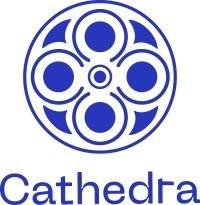
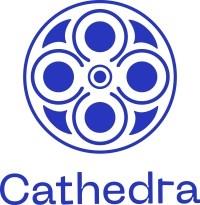




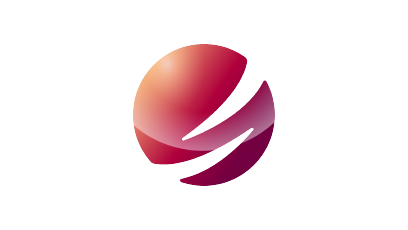
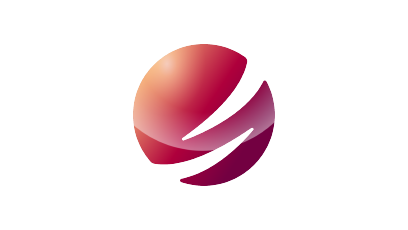


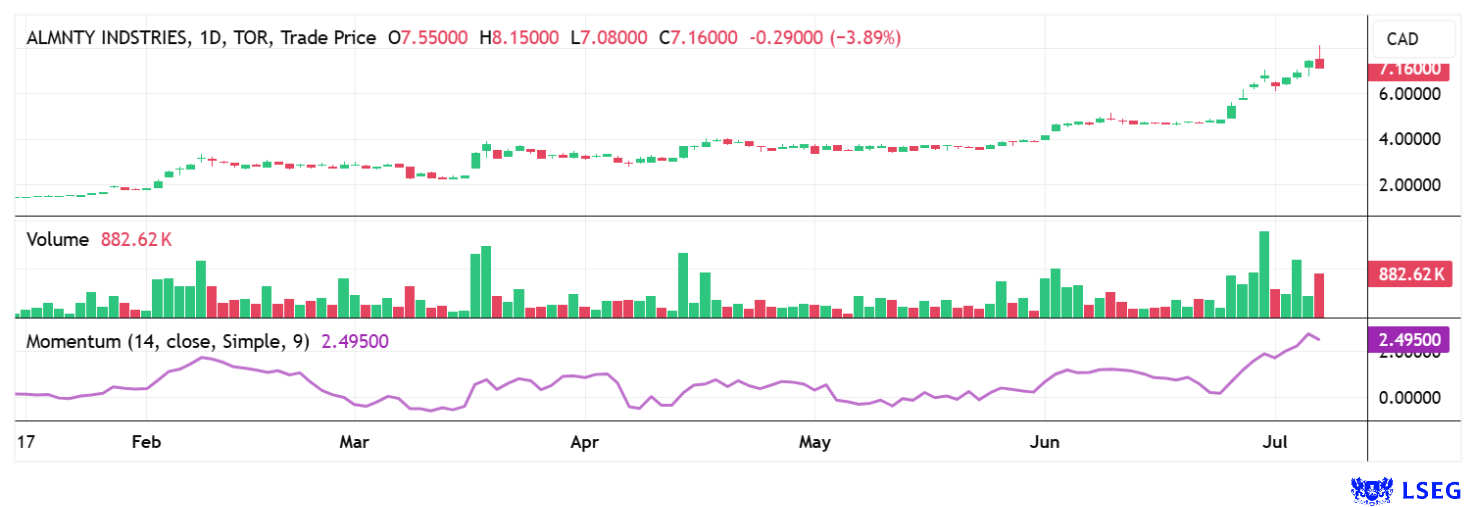


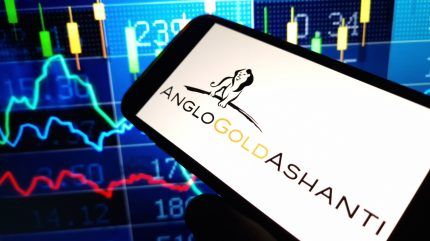






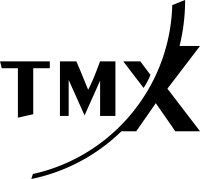


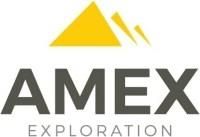
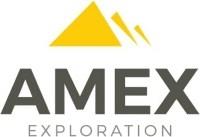
Comments